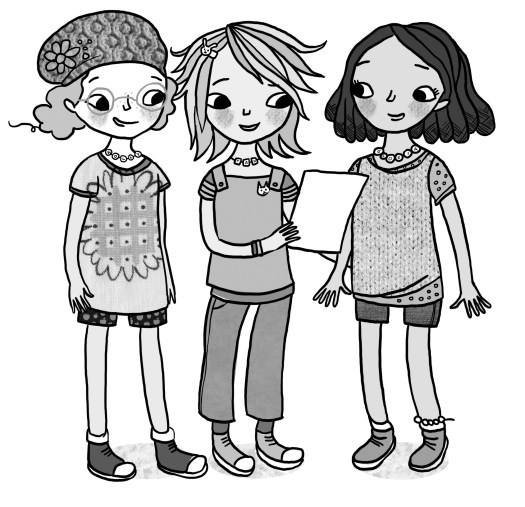If your story’s a bit flat, if things aren’t moving, have a think about your characters.
What’s driving them? In particular, think about your main character. Your protagonist.
Is your protagonist wobbling along on a rusty pushbike, veering all over the track, in danger of falling off at any moment? Is she wandering through the story without a compass?
Your protagonist must have something more than an old treadly and a bag of breadcrumbs to carry her through the story. She (or he) must NEED something, like, really badly.

In other words, they must have a dramatic need—a need that must be met, that will cause problems for them and fuel drama.
This need might be physical. Your character is trapped on top of a mountain, with a broken leg, no water and half a peanut.
Or it might be psychological or emotional. Your protagonist might need to grow up, smarten up, express their inner turmoil, find their courage or learn that it’s wrong to punch people in the chops…
Think about Max in Where the Wild Things Are. I’d say his dramatic need is to vent his anger in a safe and healthy manner.
It doesn’t matter if you’re writing a picture book or a novel, at some point you need to get super clear about your protagonist’s dramatic need.
This will be the hook that pulls your character (and YOU) through the story. It will also be the hook that pulls your reader along. The reader must care. The reader must be curious. The reader must want to know EVERYTHING.
What’s going to happen next?
How is Billy going to climb out of the well, avoid capture, survive small pox, negotiate with the aliens, save his dog from a rabid puma, walk into the schoolyard with that hideous haircut?
That kind of stuff.
In each of these scenarios, Billy would have some kind of dramatic need: physical survival, emotional survival, psychological survival or expansion.
Etcetera.
Of course, the longer the story, the more dramatic needs there will be. Dramatic needs have a tendency to compound. But usually there’s one biggie that’s at the core of a story.

It’s enlightening and hugely helpful, to figure out what that is and then articulate it. Write it down. Have it there in the margins of your story or on a sticky note. Pin it to your vision board or tape it to the cover of your writing journal.
Understanding your character’s dramatic need will help you. It will be a guiding light when the story starts floundering and you feel like you’re losing your way.
In addition, if your story is, um, BORING, you must ask yourself if the dramatic need is strong enough. Is it convincing? Does it justify action, create compelling challenges?
As Brenda Ueland points out, you must never be an advocate for your characters.
You mustn’t be kind and accommodating. Don’t get too cozy with ’em. Don’t let your darlings charm you.

Create drama. Figure out what your characters need, uncover their burning desires, then set up roadblocks to fulfilment.
Make life tough.
Raise the stakes.
Ramp things up.
You’re not a fairy godmother. You’re an author. You must put your protagonist to the test.
Be mean.
Jen xo


Great post, Jen. I am going to get meaner to my characters. I love the bit where you mention the kid and his horrible haircut. I can feel the pain.
Yes! So often my characters are boring old sloths, and that is definitely the way to get them moving!